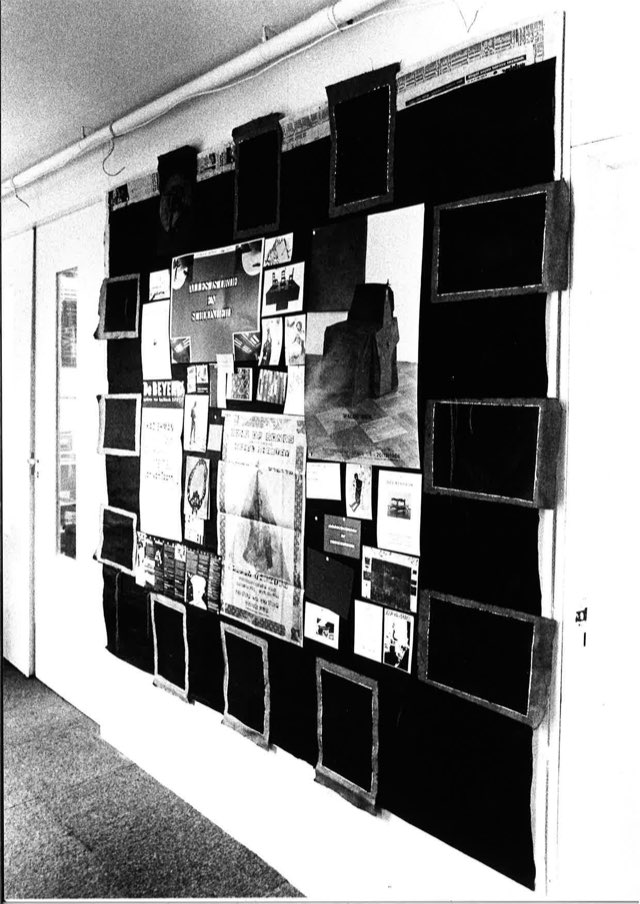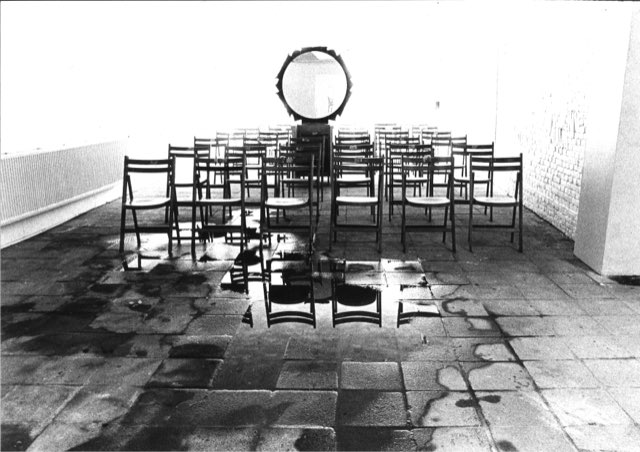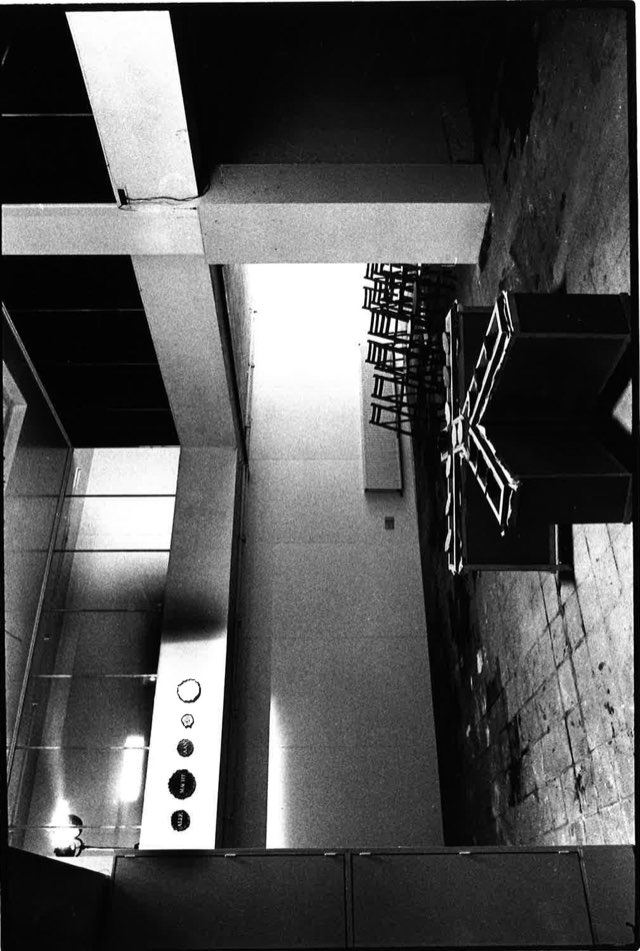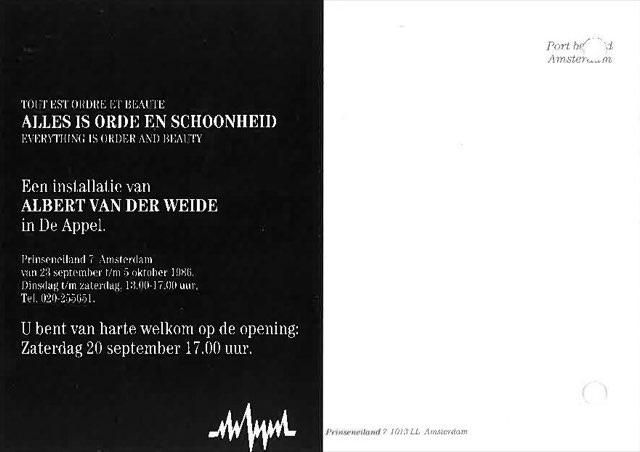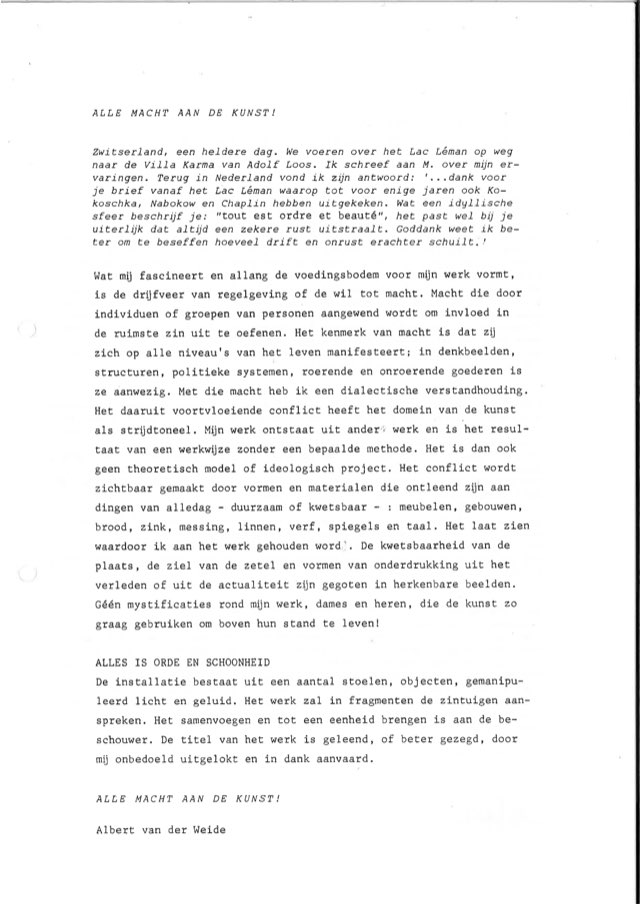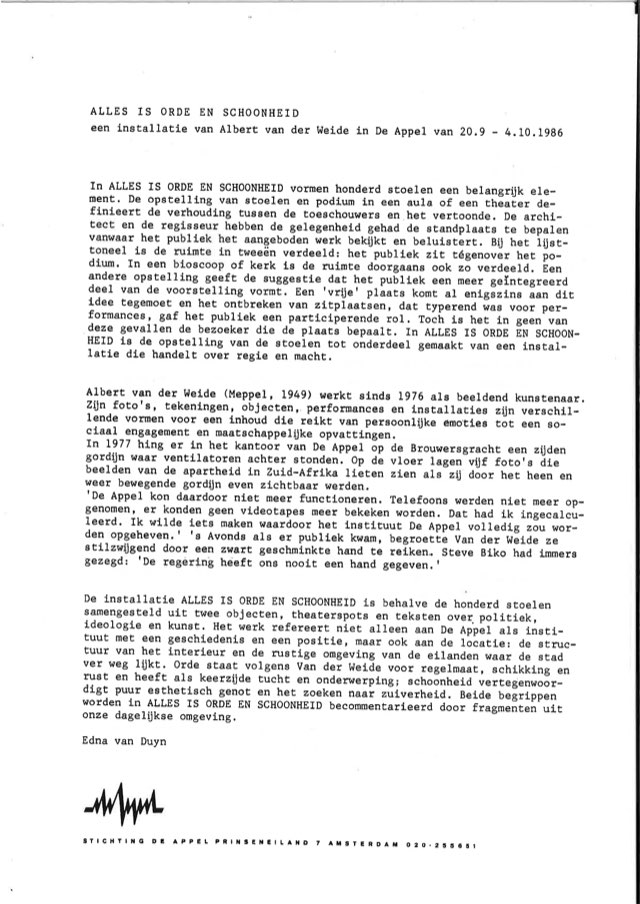Albert van der Weide "All is order and beauty"
23.09–05.10.1986
de Appel, Prinseneiland 7, Amsterdam
de Appel, Prinseneiland 7, Amsterdam
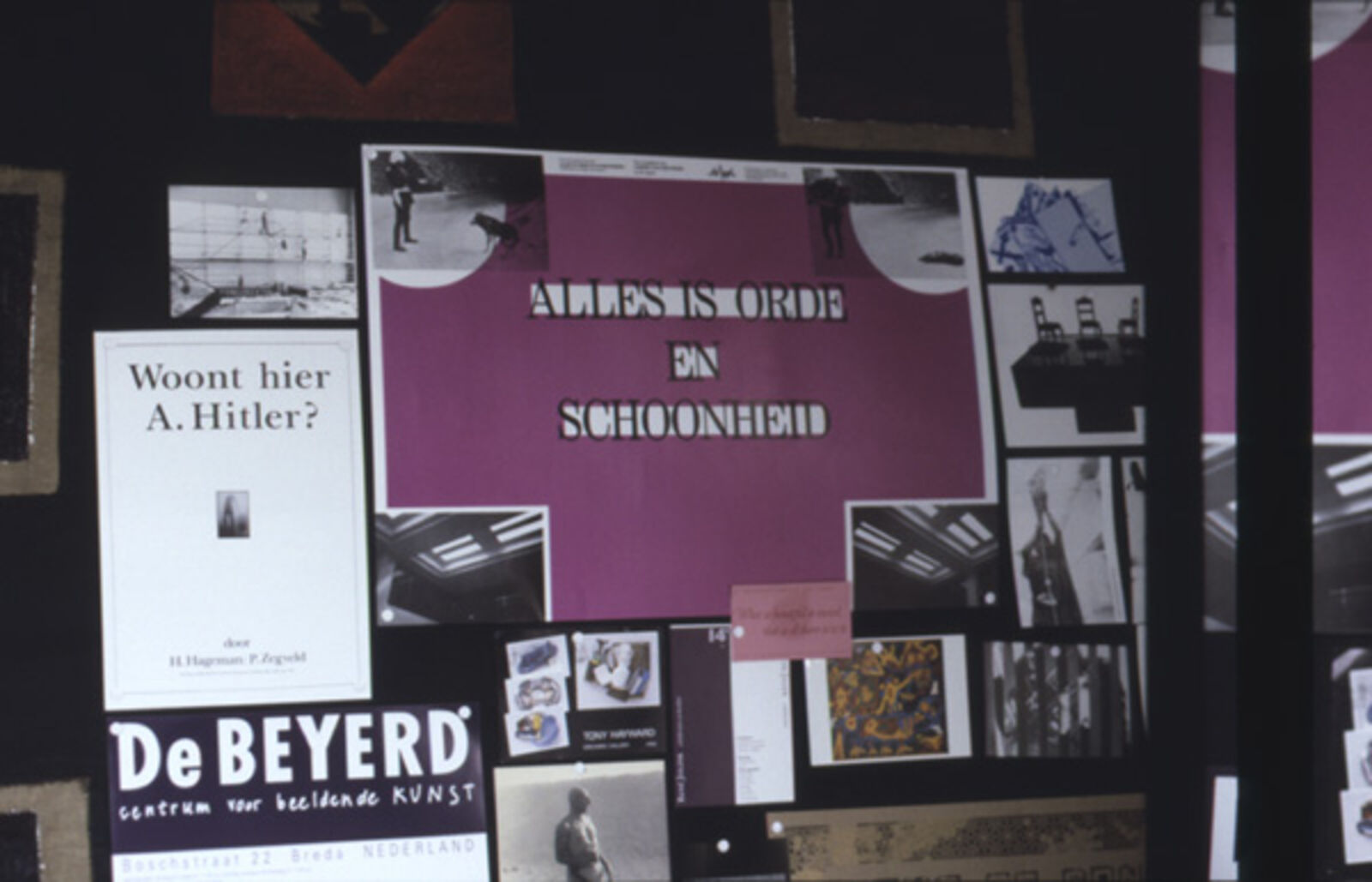
Poster

All is order and beauty I
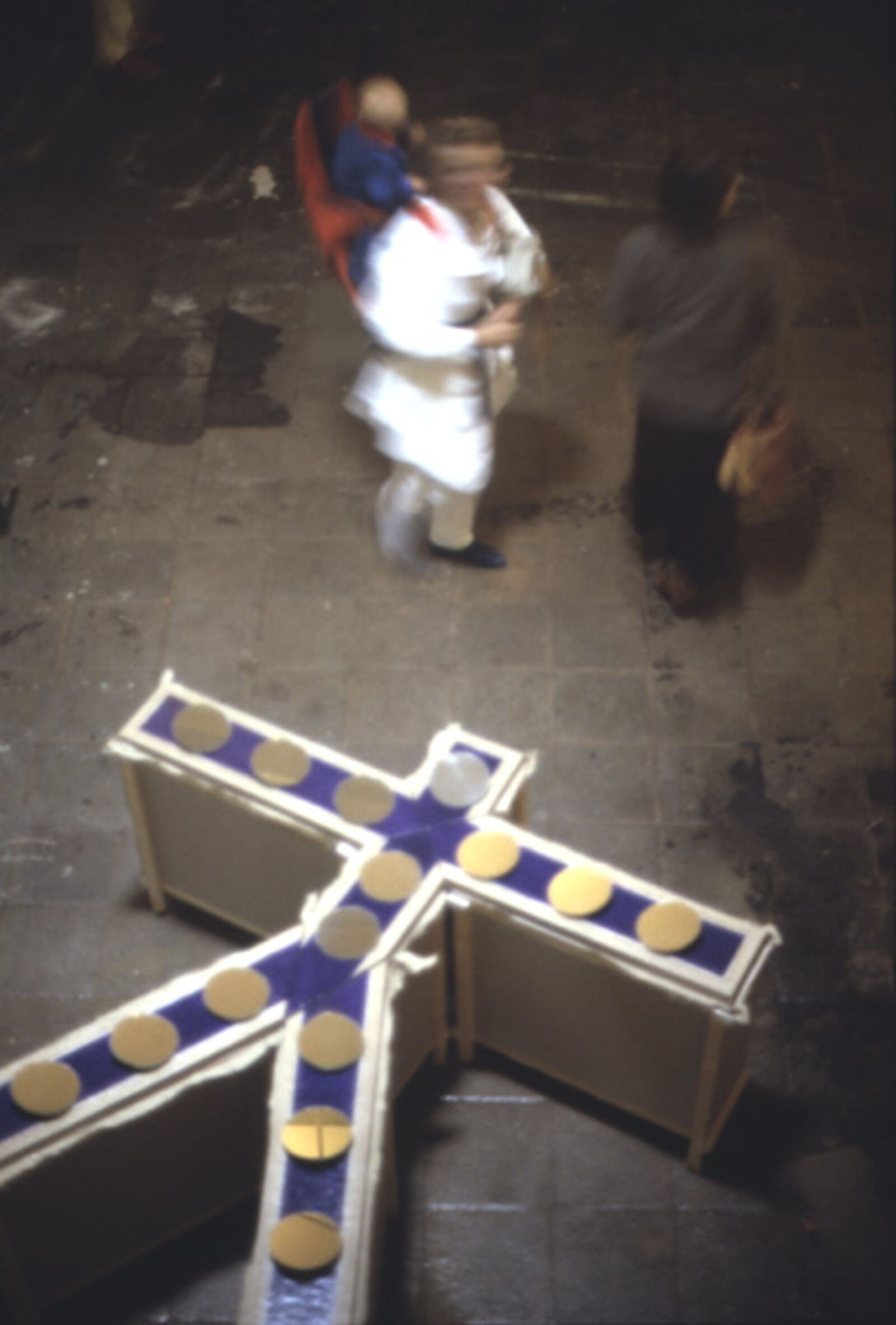
All is order and beauty II
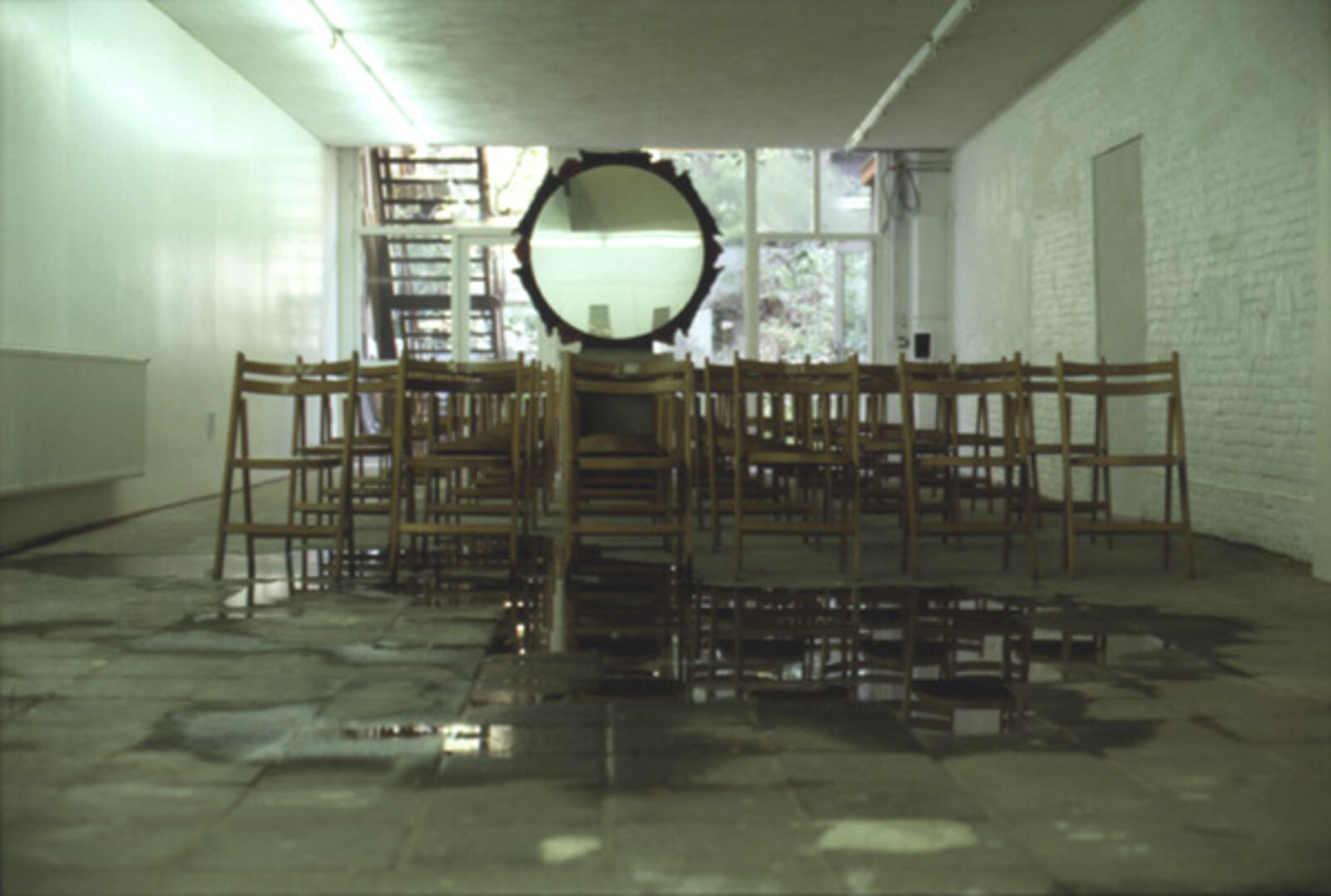
All is order and beauty III
'The installation Alles is orde en schoonheid (All is order and beauty) contained, besides a hundred chairs, objects, spotlights and texts on politics, ideology and art. The work referred not only to De Appel as an institution with a history and a position but also to the location: the structure of the interior and the quiet environment of the islands where the city seems far away. Order, according to Albert van der Weide, stands for regularity, arrangement and rest and its obverse is discipline and subjection; beauty represents pure aesthetic enjoyment and the search for purity. Both concepts were commented upon in Alles is orde en schoonheid by means of fragments from our daily environment.
In the hall, Albert van der Weide put up a large sheet of paper made up of pages from various international newspapers. Pieces of linen painted violet were glued to the edges. Two hands holding a revolver could be seen on one of the pieces. The centre of the whole surface was painted black and had invitations, posters and folders pinned to it as usual, only now they were made official by the setting. The large table in the library was covered with a purple cloth that was also spread over a large part of the floor. On the table, a pickaxe was precariously balanced by a black ring. The visitors could gather round this proletarian symbol to consult a book. Like a decree the texts ‘Alle macht aan de kunst’ (‘All power to art’) and ‘Alle kunst aan de macht’ (‘All art to power’) were hanging to the left and right of the empty space on boards which took the form of bottle tops and were illuminated by spotlights. Light entered through only one the four skylight windows to illuminate a sculpture which stood in the empty space and, when seen from above, rep resented a spread-eagled figure. The upper part was pasted over with linen and painted ultramarine. Round mirrors were placed on top to reflect the daylight. Chairs, encircling a large throne-like seat stood to the left of the dividing-wall which runs to the back. A large mirror, which was the first thing to catch the eye, was set into a hexagon covered with linen The cloth was painted in bordeaux red and ultramarine blue, giving the throne a reverent character There appeared to be a photograph under the paint on the back: Rambo, which van der Weide pronounced suggestively as Rimbaud.
The light fell through the windows inside and shone like an aura around the throne. The windows to the right were blacked out and the chairs facing this direction confronted a black hole. There were noises heard: a typewriter, a photocopier, a telephone. The speakers were connected to a microphone placed in the office above this room. De Appel's programming, grants, the artists and the alcohol supply were amongst the topics discussed here. Alles is orde en schoonheid wants to enhance the fact that the premises of De Appel are more than the location where the final product is shown not only is the artist presented, visitors see themselves reflected as well and the organization itself is being 'tapped'. All parts of the installation refer to the balance of power but Van der Weide gives this political issue a more complex form than in the works he previously carried out at De Appel. His performances and installations, such as South Africa I (1977), South Africa II in collaboration with the Mickery Theatre (1979) and his contribution to Works and Words ( 1979) were more direct and less ambiguous. Alles is orde en schoonheid is an installation involving different levels of working with the form; thus creating a combination of constructions, painting, ready-mades, language and time. This leaves the meaning and interpretation more open and more ambiguous. The precariously balanced pickaxe Rimbaud or Rambo?'
(Edna van Duyn, ‘Rambo or Rimbaud’, De Appel, 7 (1987) 1, pp. 18, 19.)

